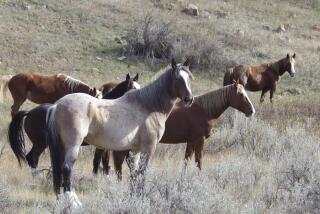U.S. to fill tunnels at Mexican border
The Department of Homeland Security has announced that it will fill in seven cross-border tunnels that critics say pose a national security risk because they could be reused by smugglers.
The Los Angeles Times reported in January that the tunnels had not been filled, largely because of jurisdictional issues and a lack of money.
“We have the funding and are moving forward,” said Michael Friel, a spokesman for Customs and Border Protection, the agency responsible for detecting and filling in tunnels.
The $2.74-million project is targeted for completion by mid-May, Friel said Tuesday.
Sen. Dianne Feinstein (D-Calif.), who has pushed for the tunnels to be filled, wrote a letter to Homeland Security officials, saying: “These are significant steps toward resolving the jurisdictional and financial impediments to remedying this ongoing threat to our nation’s borders.”
Most of the unfilled tunnels are along the California-Mexico border. They include two tunnels between Calexico and Mexicali, as well as the longest tunnel ever discovered, a nearly half-mile-long route connecting warehouses in San Diego and Tijuana. Another passage, which has remained unfilled for 13 years, is known as the “Taj Mahal” because of its lighting system and reinforced concrete walls.
Because of increasing enforcement above ground, smugglers have been going underground to ferry drugs and people into the United States. In the last few years, authorities have discovered nearly 50 tunnels, most of them with a terminus in California or Arizona.
The vast majority of the tunnels are small, crudely built passages that are easily destroyed. The seven that will be filled are among the most sophisticated ones found.
Authorities have tried to seal the larger tunnels, plugging them with concrete at the exit points and at the border, but leaving the areas in between largely intact. At least two tunnels -- one with an exit in Nogales, Ariz., and the other with an exit in San Diego -- were reused by smugglers who dug around the cap to access the original passage.
*
More to Read
Start your day right
Sign up for Essential California for news, features and recommendations from the L.A. Times and beyond in your inbox six days a week.
You may occasionally receive promotional content from the Los Angeles Times.







